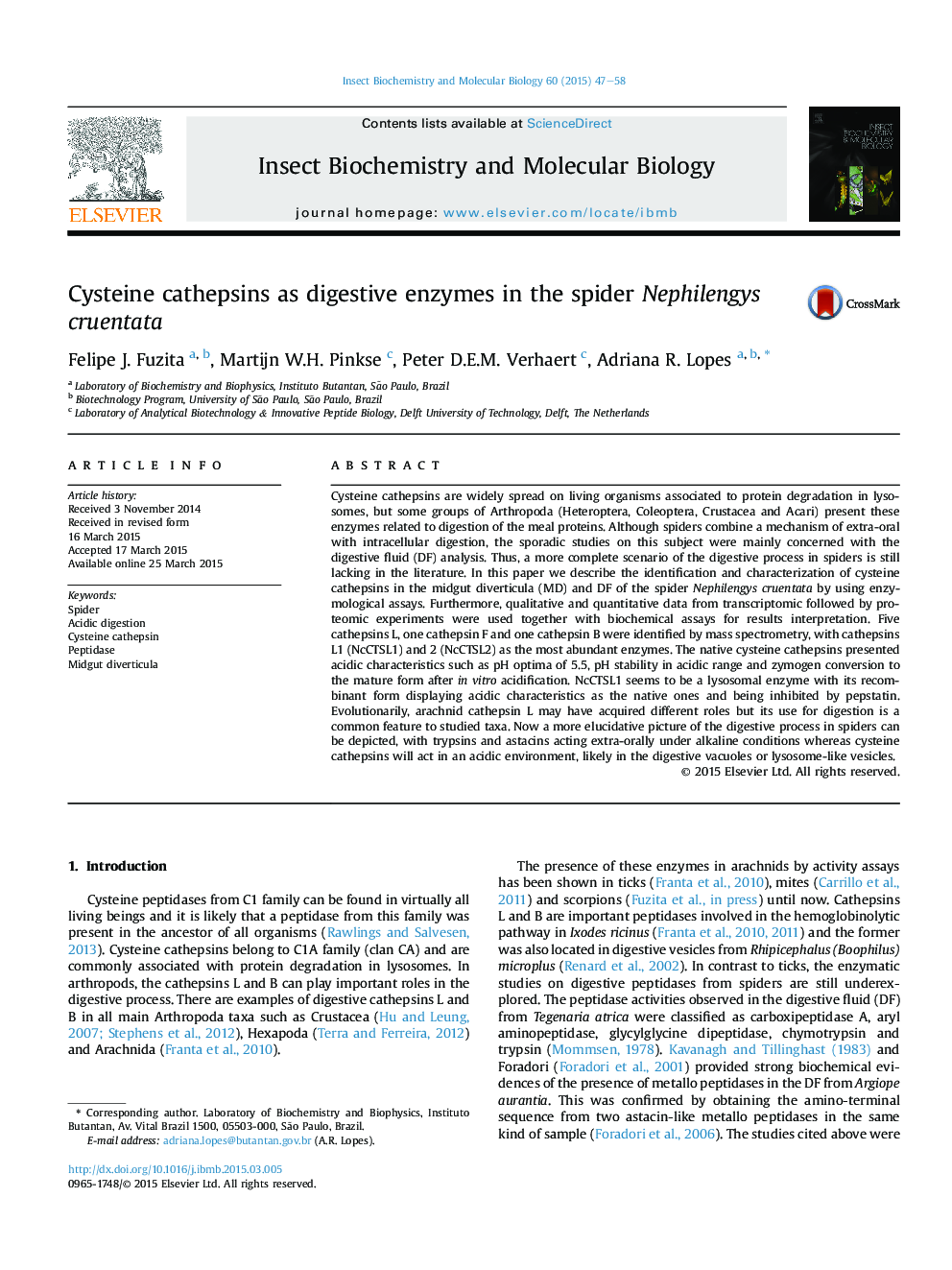| کد مقاله | کد نشریه | سال انتشار | مقاله انگلیسی | نسخه تمام متن |
|---|---|---|---|---|
| 1981994 | 1539492 | 2015 | 12 صفحه PDF | دانلود رایگان |

• Characterization of cysteine cathepsins in midgut diverticula and digestive fluid of the spider Nephilengys cruentata.
• Cathepsins L, cathepsins B and F were identified in the midgut diverticula by transcriptomic and mass spectrometry.
• A cathepsin L (NcCTSL1) was expressed in the zymogen form and activated in acidic conditions.
• Cathepsins L and B are among the main peptidases involved in the intracellular digestion.
Cysteine cathepsins are widely spread on living organisms associated to protein degradation in lysosomes, but some groups of Arthropoda (Heteroptera, Coleoptera, Crustacea and Acari) present these enzymes related to digestion of the meal proteins. Although spiders combine a mechanism of extra-oral with intracellular digestion, the sporadic studies on this subject were mainly concerned with the digestive fluid (DF) analysis. Thus, a more complete scenario of the digestive process in spiders is still lacking in the literature. In this paper we describe the identification and characterization of cysteine cathepsins in the midgut diverticula (MD) and DF of the spider Nephilengys cruentata by using enzymological assays. Furthermore, qualitative and quantitative data from transcriptomic followed by proteomic experiments were used together with biochemical assays for results interpretation. Five cathepsins L, one cathepsin F and one cathepsin B were identified by mass spectrometry, with cathepsins L1 (NcCTSL1) and 2 (NcCTSL2) as the most abundant enzymes. The native cysteine cathepsins presented acidic characteristics such as pH optima of 5.5, pH stability in acidic range and zymogen conversion to the mature form after in vitro acidification. NcCTSL1 seems to be a lysosomal enzyme with its recombinant form displaying acidic characteristics as the native ones and being inhibited by pepstatin. Evolutionarily, arachnid cathepsin L may have acquired different roles but its use for digestion is a common feature to studied taxa. Now a more elucidative picture of the digestive process in spiders can be depicted, with trypsins and astacins acting extra-orally under alkaline conditions whereas cysteine cathepsins will act in an acidic environment, likely in the digestive vacuoles or lysosome-like vesicles.
Figure optionsDownload high-quality image (294 K)Download as PowerPoint slide
Journal: Insect Biochemistry and Molecular Biology - Volume 60, May 2015, Pages 47–58